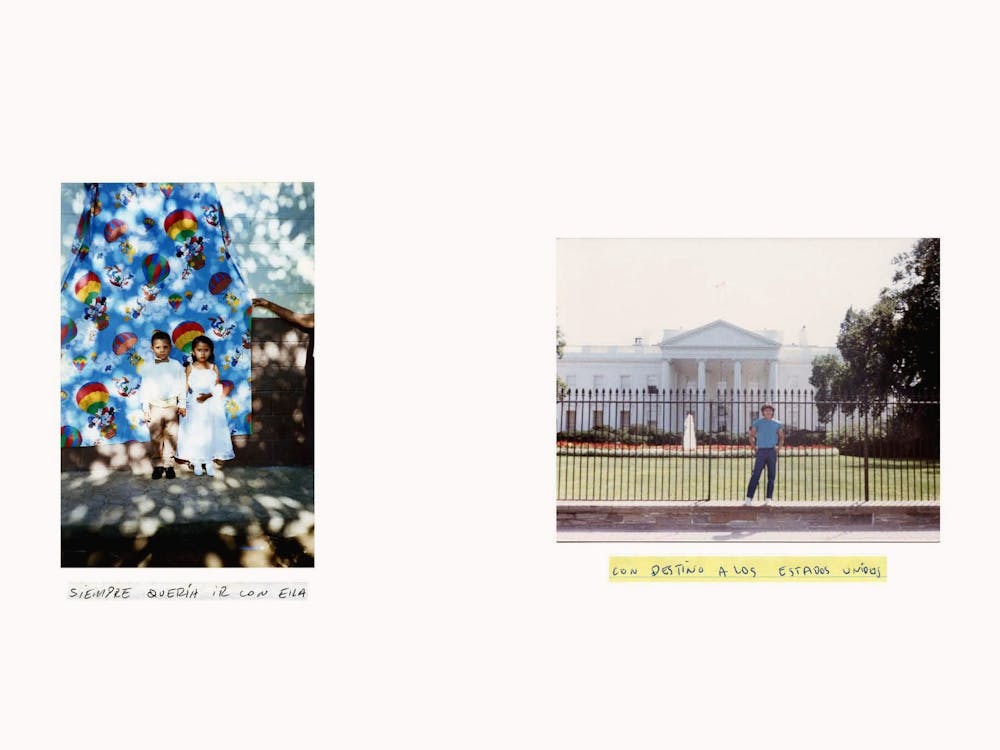While the idea that Snapchat has your location at any given moment can be disconcerting, it is inarguably difficult to feel alone in the world anymore.
After an opening reception tomorrow at 5 p.m., “Connected Diaspora: U.S. Central American Visuality in the Age of Social Media” will be displayed in the Fredric Jameson Gallery in the Friedl Building until February. The exhibit, curated by visual artist Veronica Melendez with support from Duke’s Program in Latino/a Studies in the Global South, features the work of 16 Central American artists portraying the connectivity of cultures in the digital era.
“Seeing a show of just artists from the Central American diaspora is kind of unheard of, at least on the East Coast,” Melendez said. “[Often] when we talk about Latinx art … we’re talking about Mexico, or Puerto Rico, or Cuba. Central America is not really part of the topic — I think it’s time to change that.”
Central America refers to the region between Mexico and South America, composed of seven countries: Panama, Costa Rica, Nicaragua, Honduras, El Salvador, Guatemala and Belize. In October, the Temporary Protected Status program was extended for Salvadorans, almost two years after Homeland Security said they were ending the program for the nearly 200,000 Salvadorans living in the United States under TPS.
“Right now, there is a spotlight being put on Central American anything. Unfortunately, a lot of it is negative, but I think this is a good time for us to take back the narrative … because people are more willing to pay attention,” Melendez said. “It’s a great time for an exhibit like this, I think, to … show a different side of our community, how creative [we are].”
Melendez co-founded a publication entitled “La Horchata Zine” alongside her best friend from college, whom she says was the first fellow artist of Central American ancestry she ever met. The publication exclusively features creatives from Central American ancestry. Many of the artists featured in “Connected Diaspora” are people Melendez met over social media through running the zine.
“Growing up in an area where there is no one else from your homeland … [it can be] very alienating and othering. Now, you can easily connect to people who have similar backgrounds,” Melendez said. “It’s a new thing, just how connected we can all be. I don’t think there has been a show where the binding force of the diaspora … is social media.”
According to Melendez, the artists featured in the show hail from all across the United States, from Florida to Texas to California, the possibility of which she credits to social media. Several artists were people whom Melendez had never spoken to before, but were immediately responsive when she reached out through e-mails and direct messages.
“People were literally entrusting a stranger with their artwork, for an exhibit that they’d never heard of that didn’t even have … a title yet. They were still so down to be a part of it,” Melendez said. “It’s incredible. That’s how much this is wanted and needed.”
North Carolina’s Latinx population increased by 24.6% from 2010 to 2018, faster than the national rate of 18.6%. Durham’s Latinx population grew from about 20,00 in the mid-1990s to about 36,000 in 2010. People identifying as Hispanic or Latinx make up 5.71% of Duke’s student body and 3.8% of faculty.
“While exhibits like ‘Connected Diaspora’ play an important part in making visible the concerns of communities that are often not represented in mainstream political discourse, I think there’s a real need for Duke as an institution to hire more Latinx faculty and be responsive to the changing demographics in the region and the country at large,” wrote Jaime Acosta Gonzalez, a Ph.D candidate in the program in literature, in an e-mail.
The Program in Latino/a Studies in the Global South felt it was important to make space for Central-American artists, as well as to promote more widespread engagement with Latinx art and culture at Duke at large.
“I hope [viewers] are able to … educate themselves on how complex the art that’s being created in our community is — that we don’t just fill in tropes of ‘trauma porn,’” Melendez said. “There’s so much creativity within our community. A lot of [our art] does touch on stories that come from intergenerational traumas, but a lot of it … also just deals with the complexities of being human.”
Get The Chronicle straight to your inbox
Signup for our weekly newsletter. Cancel at any time.

